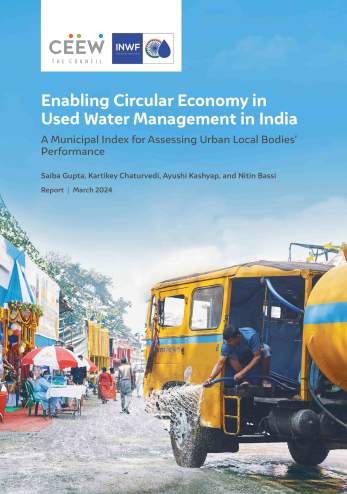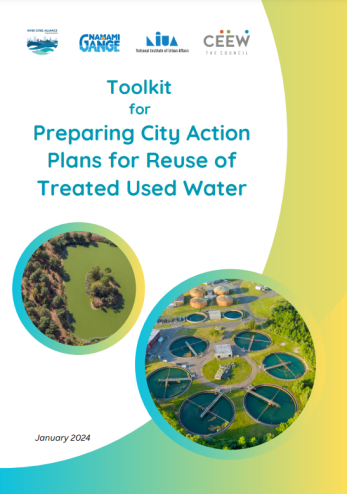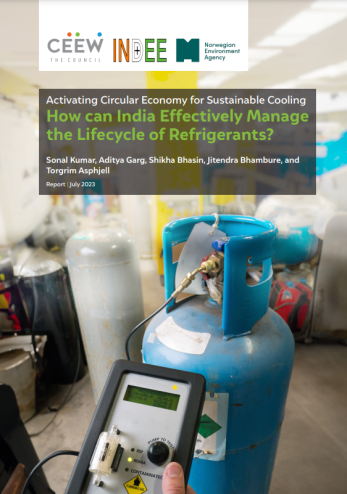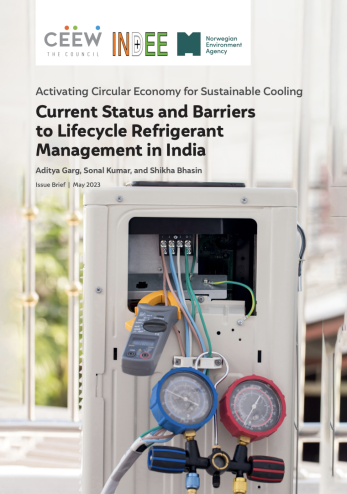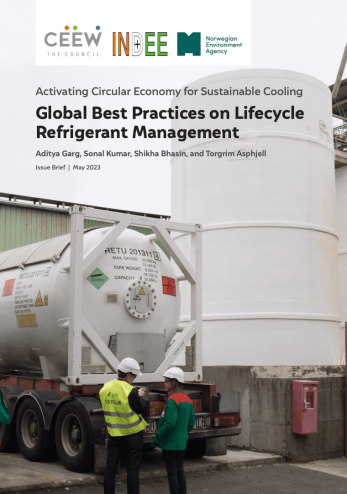Issue Brief
Decentralised Waste Management in Indian Railways
A Preliminary Analysis
Mohit Sharma, Kangkanikaa Neog, Rudresh Kumar Sugam, and Aditya Ramji
June 2016 | Circular Economy
Suggested Citation: Sharma, Mohit, Kangkanikaa Neog, Rudresh Kumar Sugam, and Aditya Ramji. 2016. Decentralised Waste Management in Indian Railways. New Delhi: Council on Energy, Environment and Water.
Overview
This issue brief examines opportunities for the deployment of decentralised infrastructure to manage the India Railways’ waste in a sustainable manner. It emphasises the regulatory compliances required for water use and water quality standard in order to prevent environmental damage. Further, it provides recommendations to leverage a waste management system in the Indian Railways.
Characterisation of Solid Waste used for Estimating Waste Management and WtE Potential at Railway Stations
.PNG)
Key Highlights
- During 2016, solid waste generated at major railway stations across the country was nearly 670 tonnes per day (TPD), of which 50 per cent is recyclable, about 17 per cent is biodegradable and 32 per cent is residual.
- The Kishanganj waste to energy (WTE) plant in Delhi had a capacity to process one tonne of biodegradable waste daily and produce 70-80 units of electricity, which is being utilised for street lighting.
- Methane content of biogas could be as high as 50 per cent and biogas generation varies from 70-90 m3 per tonne of organic waste.
- Energy recovery potential for major railway stations (Kolkata, New Delhi, Chennai, Mumbai, Bangalore, Danapur, Vijayawada) was estimated at around 17.6 MWh (biogas).
- Indian Railways is the third-largest consumer of water after agriculture and the power sector. However, the Railways do not maintain a centralised database on its water use across its Zones and Production Units.
- Approximately 4,000 tonnes of human waste per day is dumped through ‘open discharge’ type toilets, that directly goes onto the rail tracks across the country.
- Types of toilets that are being piloted by Indian Railways include vacuum toilets, which can increase water-use efficiency onboard trains. Water consumption in these toilets is minimal with a maximum of 0.8-liter water requirement per flush.
- Rainwater harvesting facilities have already been installed at 2060 locations. The same has been approved for 130 more locations.
- Monitoring of water use is of utmost importance in order to increase water use efficiency. Therefore, the installation of water meters and SCADA systems are recommended.
Key Recommendations
- Create an enabling environment by leveraging the existing regulations in the Indian Railway system, finding synergies with national missions/policies and restructuring existing institutional arrangements or creating new institutions.
- Formulate a ‘Comprehensive Environmental Management Plan’ (CEMP) that includes waste management, enhanced resource use efficiency, energy management and controls air and water pollution.
- Carry out pilot studies with regard to resource use and waste management across the railways.
- Prepare a detailed strategy, in consultation with sectoral experts, for diverting 67 per cent solid waste that ends up in landfills.
- Form a joint committee comprising experts from the Railways, the Ministry of Urban Development, Pollution Control Boards and civil society to review and suggest necessary action points for the effective implementation of interventions.
Types of toilets that are being piloted by Indian Railways include vacuum toilets, which can increase water-use efficiency onboard trains. Water consumption in these toilets is minimal with a maximum of 0.8-liter water requirement per flush.Types of toilets that are being piloted by Indian Railways include vacuum toilets, which can increase water-use efficiency onboard trains. Water consumption in these toilets is minimal with a maximum of 0.8-liter water requirement per flush.





